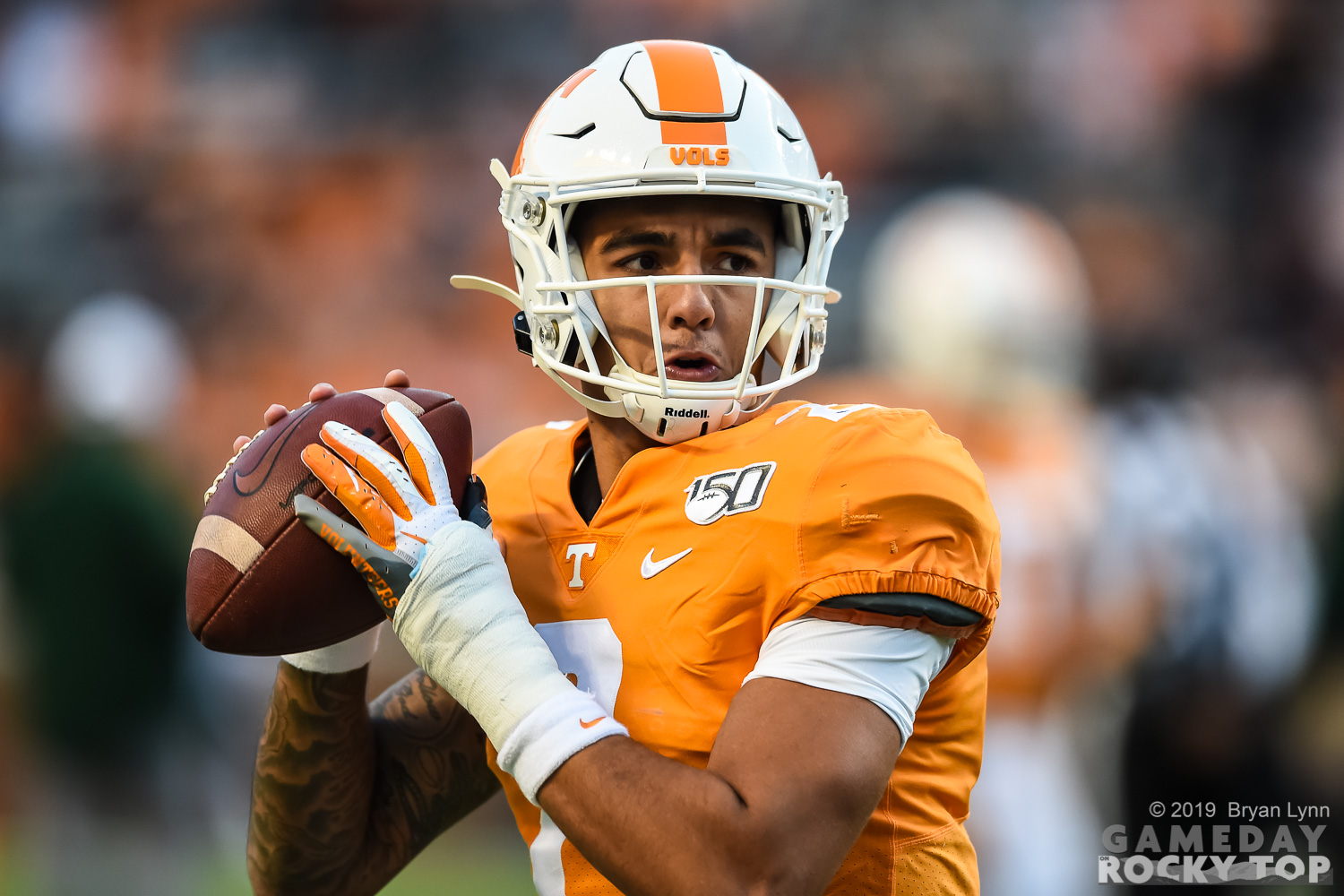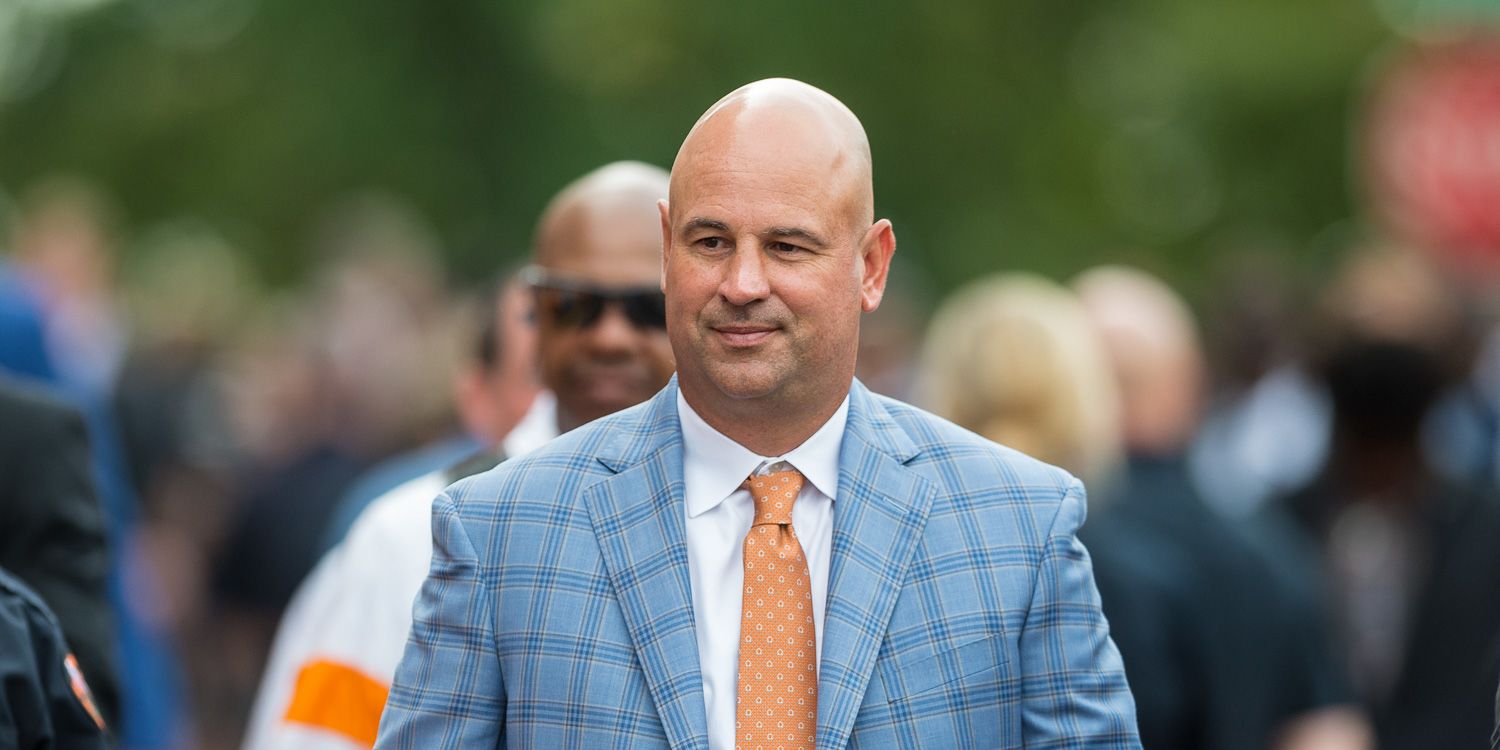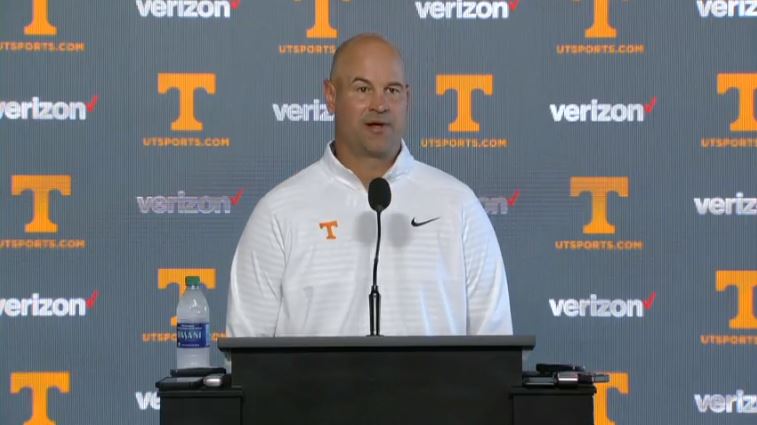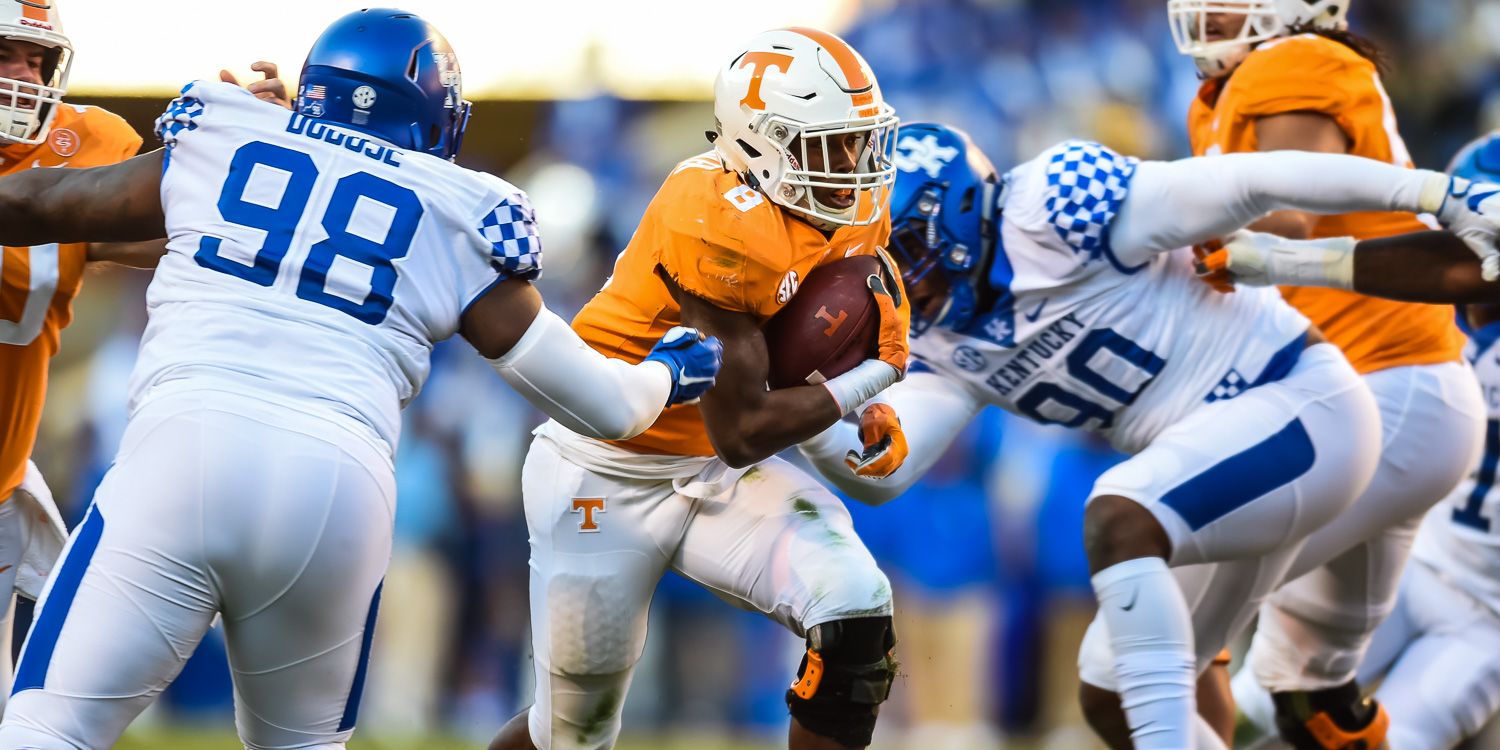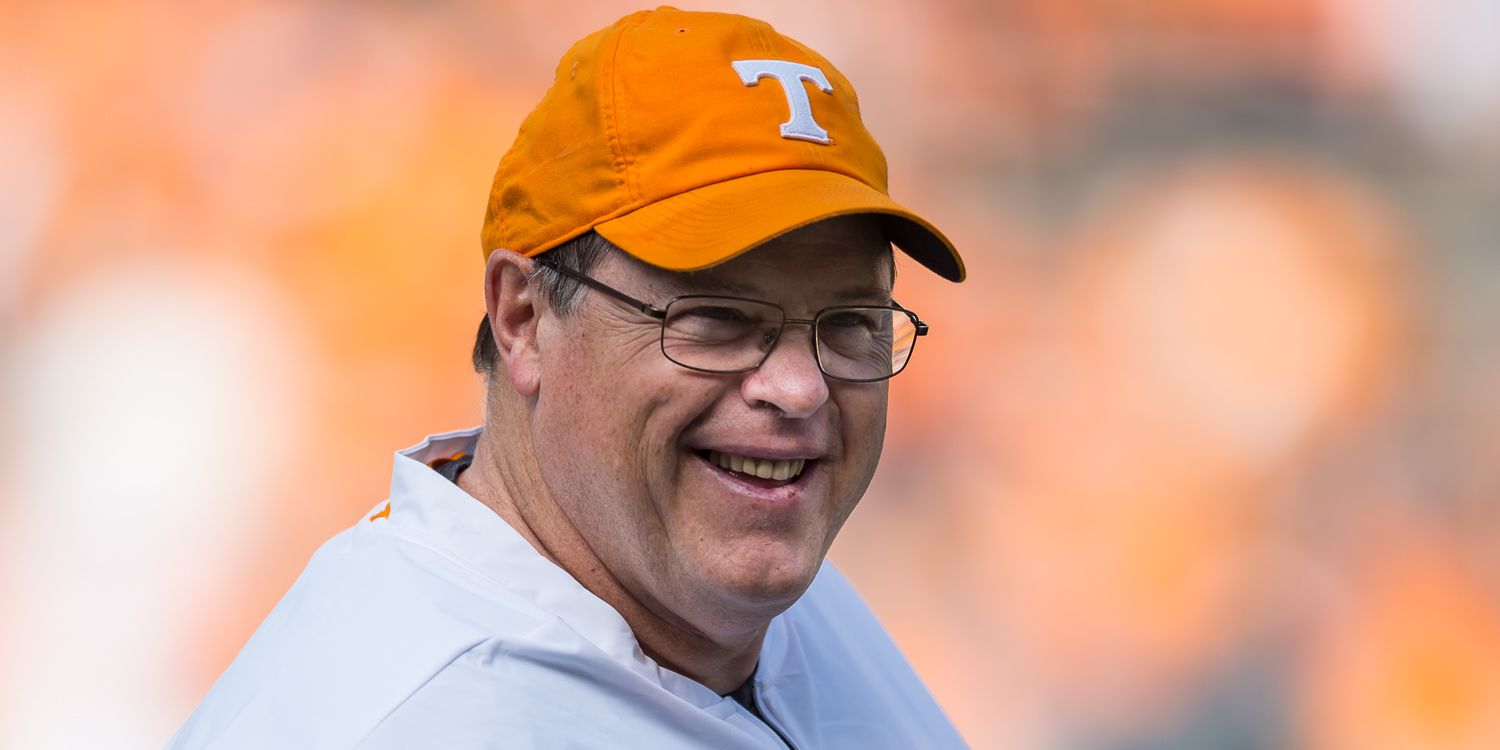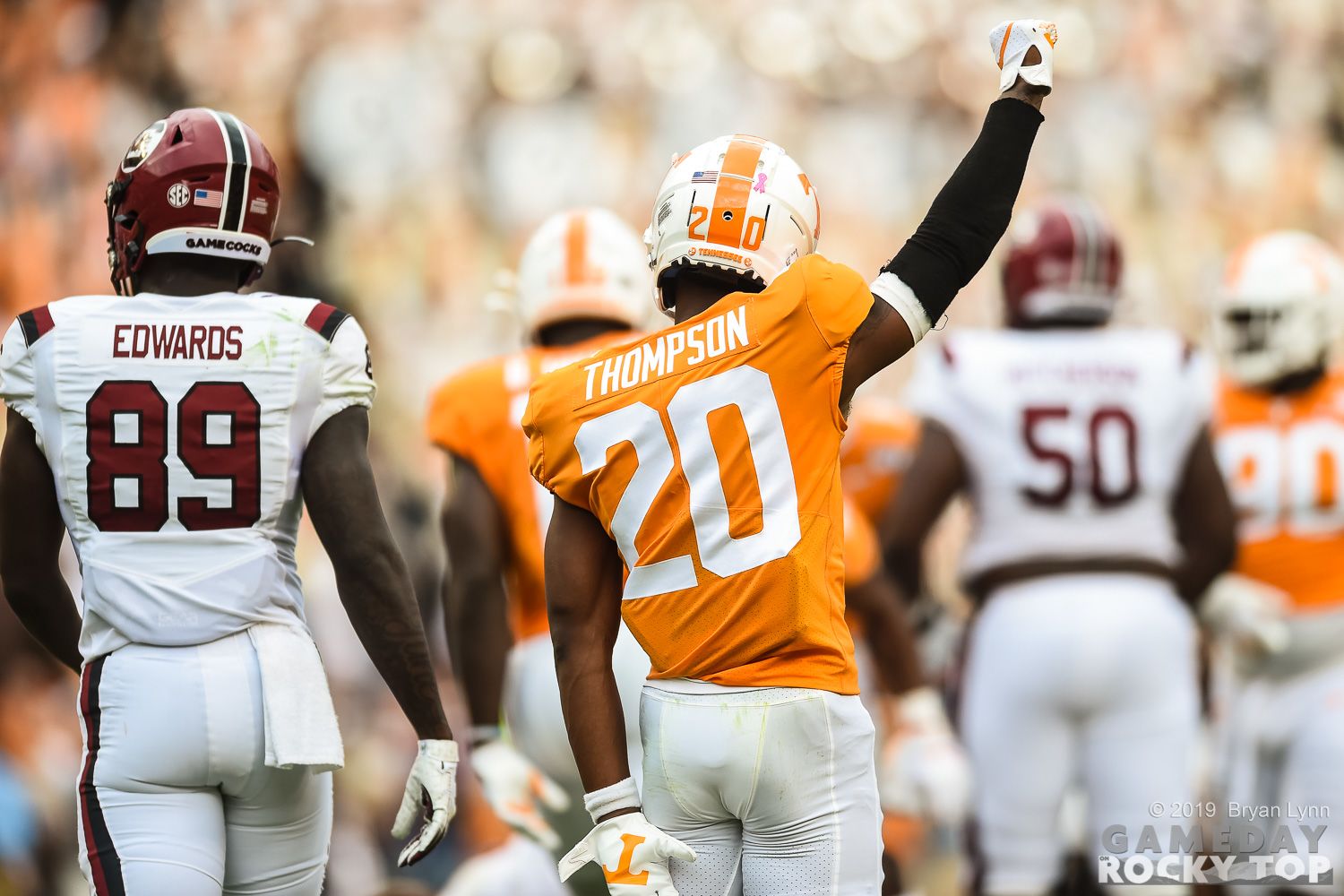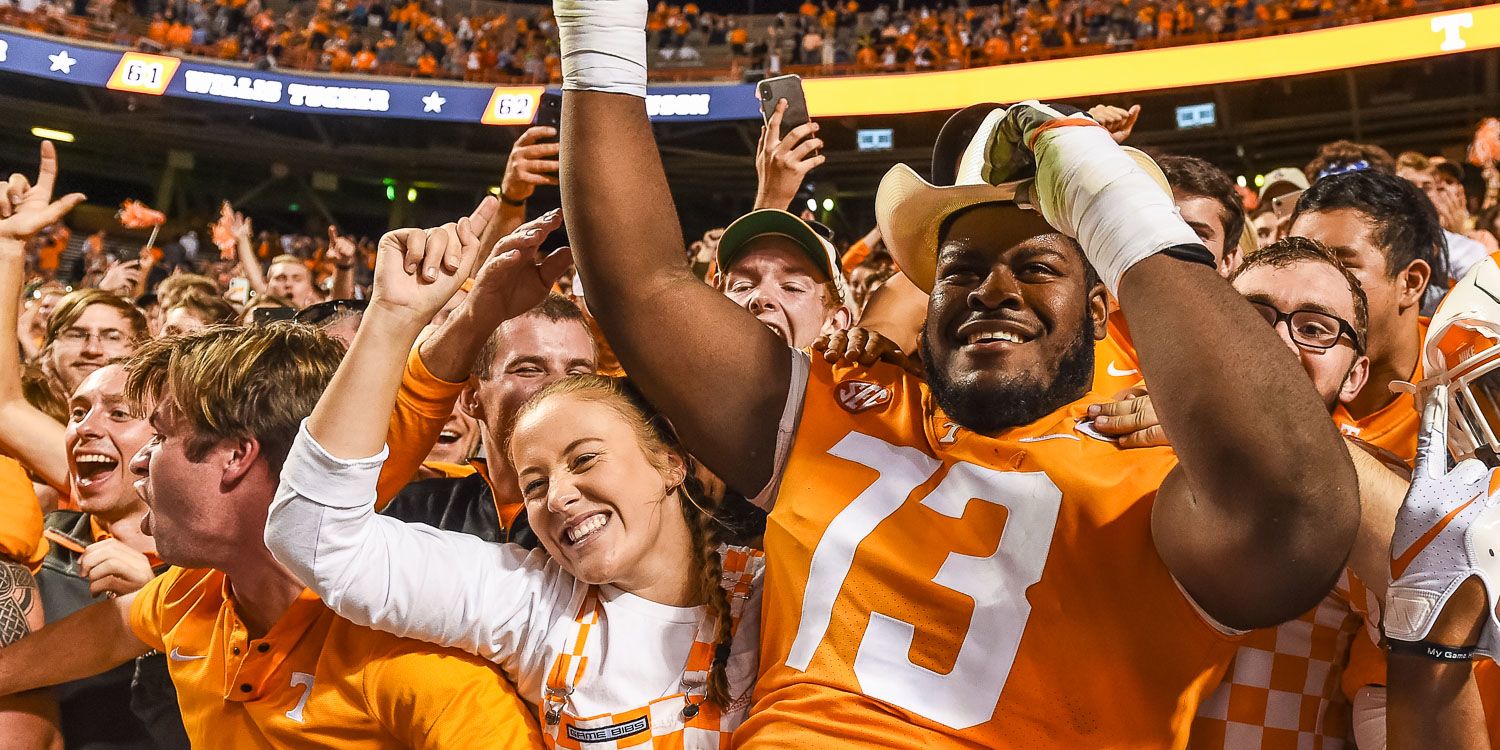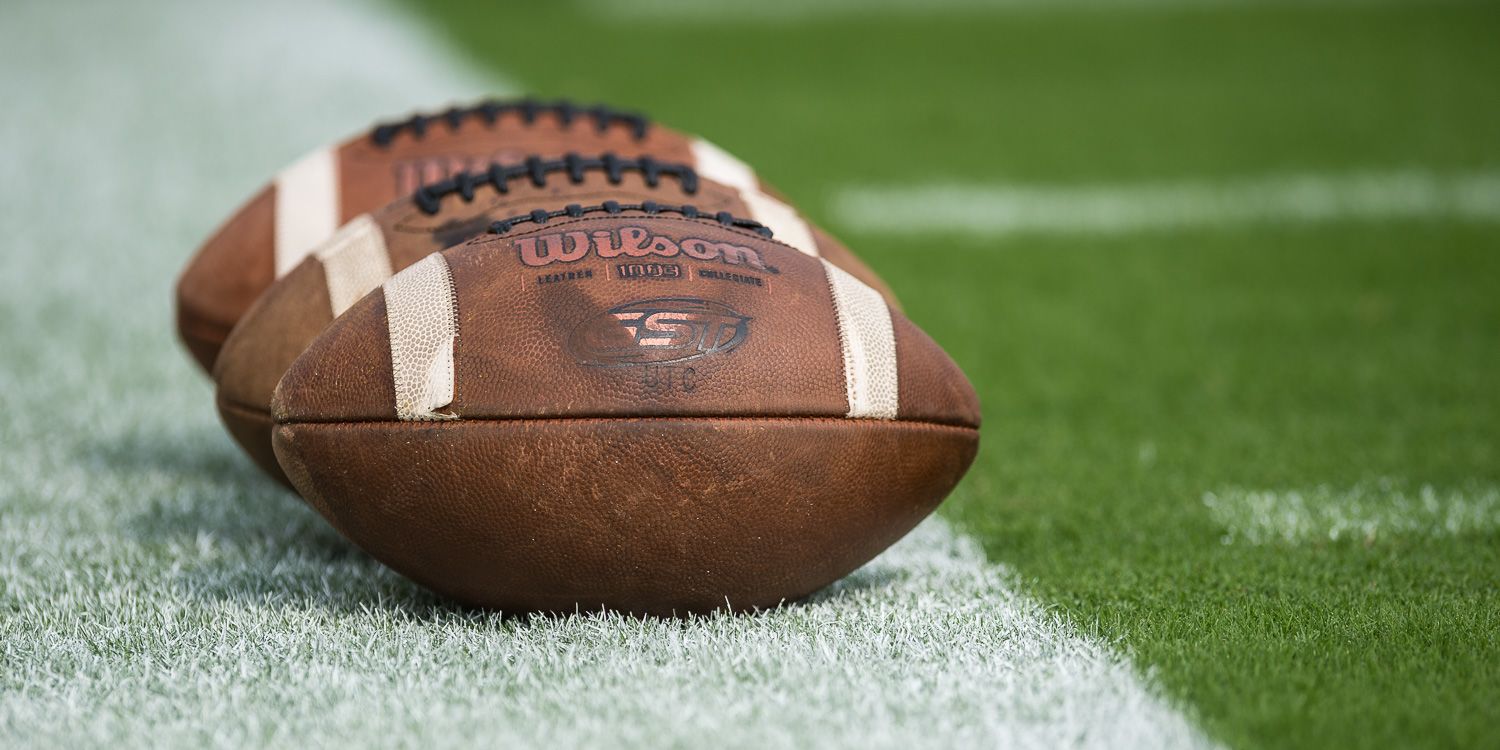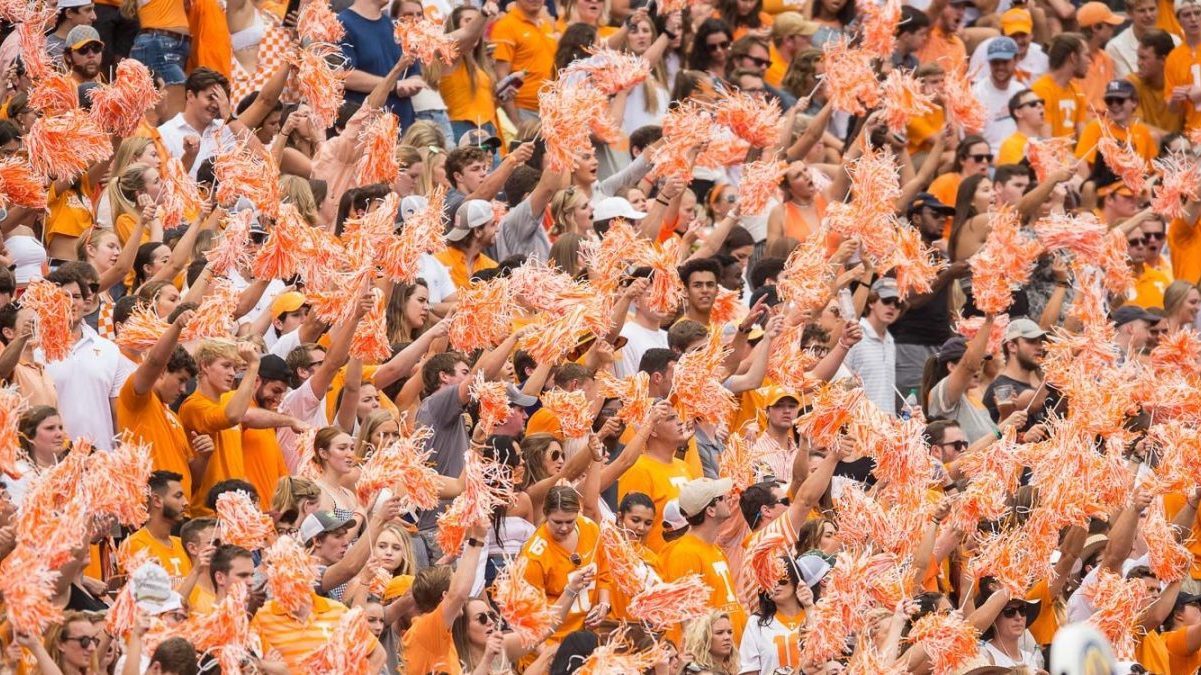For quite a while now, Tennessee’s most realistic option for adding a blue chip Quarterback in the 2021 class has been Christian Veilleux. Veilleux has been to campus three time, including throwing for OC Jim Chaney last summer, the 2019 season home game against Mississippi State, and again for a Junior Day in mid-January. And while the Vols are very much still at the top of the list for Veilleux, along with Penn State and Clemson (pending an offer from the Tigers, which is likely dependent on them missing on Caleb Williams), Tennessee has recently made a move with two other highly recruited QBs that potentially could give them some options at the game’s most important position.
Miller Moss, 247 Sports’ #62 overall player in the 2021 class and #8 overall QB, received an offer from the Vols just last week and due to a major tie to the program seems to be giving Tennessee a hard look. Moss is coached at Bishop Almeny HS in Mission Hills, CA by none other than the Ice Man himself, Casey Clausen, and the entire Clausen family (Rick is the OC) appears to be a real positive in Tennessee’s corner in this recruitment. Moss is being recruited by many of the top programs in the country, including West Coast power Oregon, local USC and UCLA, and even LSU and Auburn to go with Tennessee in the SEC. His 7-on-7 team is traveling to Tampa as well as Gatlinburg at the end of February and he is currently planning on trying to visit the campuses of Tennessee, LSU, and Auburn while he’s out this way. Should he indeed make it to Knoxville the Vols will likely emerge as real players, as the tie to the Clausens and the 2020 WR class and rebuilt offensive line are sure to be big draws. Of course if he doesn’t then one can almost surely scratch him from the list, so that visit will be the pivot point for Moss and the Vols and therefore will be watched very closely.
Texan Kaiden Salter is the other QB who the Vols have made a recent move with as the most recent dead period comes to and end. Salter is more of a dual threat than Veilleux, Moss, or anyone Tennessee currently has on campus. From the Dallas area of Cedar Hill, Salter is ranked just behind Moss at #89 nationally. Although he is regarded as a pass-first QB, Salter’s raw athleticism is incredibly impressive, and he complements his exploits on the gridiron by being a high level track and field athlete. On film it’s truly functional athleticism, too, as he is able to not just run for yardage and scores but also to elude defensive lineman and make plays out of the pocket and of course just run away from defenders. Tennessee appears to be in Salter’s top group along with Ole Miss (where he’ll visit with his 7-on-7 team the first weekend of March), Auburn, UCLA and Baylor. The commonality among that group is the spread offenses they all run that also depend on a dual threat QB. How that fits with what Chaney does is interesting, and perhaps along with the signing of Jimmy Holiday in the 2020 class the recruitment of Salter could signal a real commitment to new concepts in the Tennessee offense.
Although Tennessee will go through its 2020 spring practice with five scholarship QBs, four of whom are scheduled to have eligibility at Tennessee into the 2021 season and beyond, few think all five of them will still be on the roster when the 2020 season begins let alone into future seasons. At the same time, when looking to the future only 2020 5-star signee Harrison Bailey has the kind of pedigree that suggests he can lead Tennessee to SEC East, SEC, and National title contention. Therefore, it’s imperative that the Vols go back to back on top of Bailey with another bonafide bluechip QB in this upcoming class. By moving up the list of contenders for two new Top 100 players in Moss and Salter, to go with being very much in the mix for Veilleux, Tennessee has now greatly increased its odds of doing just that.
